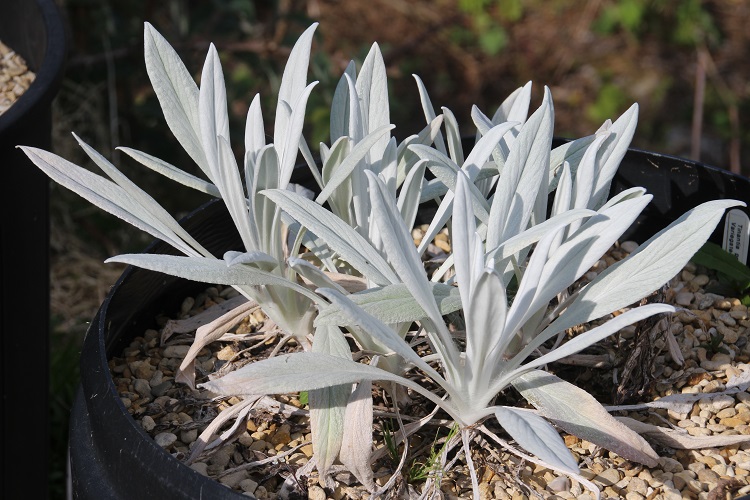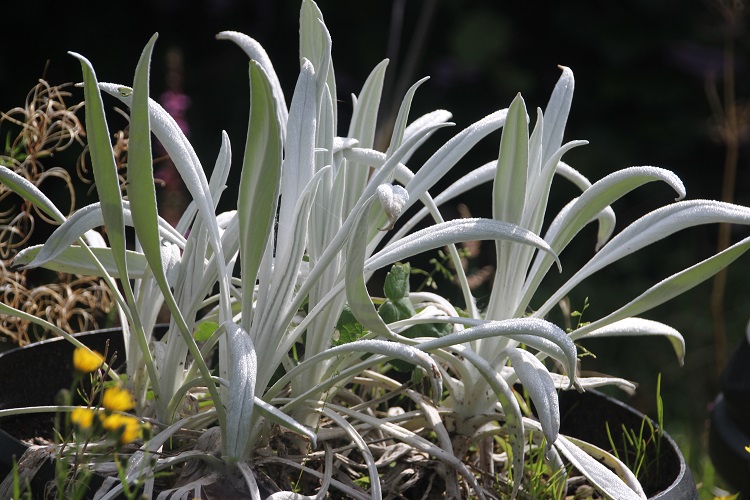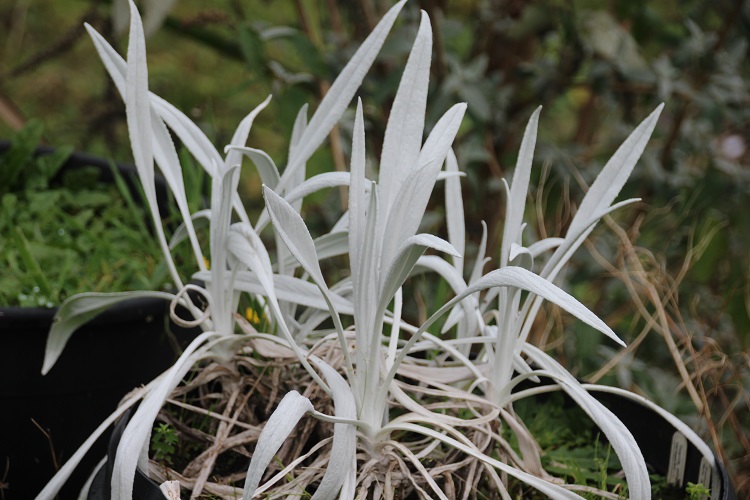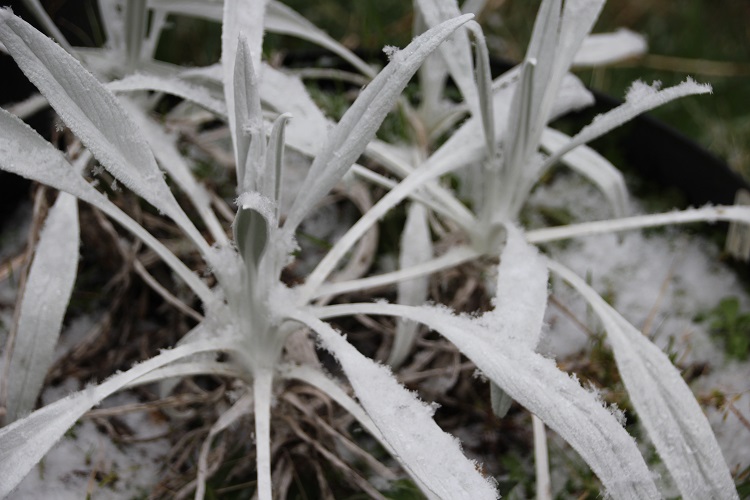Writing as the Laidback gardener (27th February 2016), Larry Hodgson says (when the plant was introduced as a Stachys):
"If I had a prize to offer for Best New Annual of 2016, it would have to go to stachys Bello Grigio® (Stachys Bello Grigio),
also sold in some markets as Stachys Mighty Velvet™. Now, it might not be totally new to you, as it was in limited release in 2015, especially on the West Coast,
but it will distributed coast to coast this spring and thus will be new to many gardeners this year.
This new introduction from the Netherlands is not at all your typical annual. After all, it isn’t grown for its flowers but rather for its silvery foliage,
joining a select group of silver-leaved annuals like the Dusty Miller (Senecio cineraria and Centaurea cineraria). Its long narrow leaves are fully
covered with soft white hairs, giving it a silvery-white effect, with no green showing at all! The new leaves are upright at first, then arch outward,
creating a silvery white fountain effect that illuminates the landscape. It’s a color you’ll find easy to use in the landscape,
as it seems to go with everything else, from plain green foliage to every flower color possible. And imagine the beauty of the soft silvery
foliage when it’s dotted with shiny dewdrops in the early morning!
Of course, this is one plant you’ll want to not just look at, but stroke. Bello Grigio is incredibly soft to the touch, like silk!"
Bello Grigio grows to about 10 to 12 inches (25 to 30 cm) tall and 12 to 18 inches (30 to 45 cm in diameter, dividing at the base as the summer goes on,
thus creating a thicker effect over time. It prefers full sun and a well-drained soil, even a little on the dry side. Don’t even think of trying it under moist conditions:
it will simply rot away. It can survive in partial shade, but there its leaves tend to sag and its growth will be reduced or even nil.
This is an excellent choice for both flowerbeds and container gardens.
As for flowers, you won’t be seeing any if you live in northern regions, as it won’t bloom under long days.
It may bloom in the South, normally in October or November. If so, expect large yellow flowers on a 4-foot (120 cm) stem.
Stachys Bello Grigio is being sold as an annual, but can be treated as perennial in zones 7 to 9, especially in a Mediterranean climate.
It is a close relative of the much hardier (zone 3) lamb’s ears, S. byzantina, a popular groundcover with leaves that are more oval and not quite as silvery."
In a blog on 11th November 2017 he added:
"It turns out not to be a stachys (Stachys) after all, but rather a Senecio known as white arnica (Senecio niveoaureus).
In other words, it’s a close relative of the popular garden annual Dusty Miller (S. cineraria, now Jacobaea maritima) and in no way related to lamb’s ears
(Stachys byzantina). The genus Senecio, in the Sunflower family (Asteraceae), has a worldwide distribution and, with more than 1200 species,
is one of the largest genera of flowering plants in the world.
The species, known as white arnica, comes from the páramo of Colombia and Ecuador, a high-altitude tundra zone found at about 10,000 to 15,000 feet (3100 to 4600 m)
of altitude in the Andes, a climate where it is cold at night all year long and rarely more than chilly during the day.
If the plant is completely covered with white hairs, that’s partly to protect it from the cold, but also to filter out excess sunlight,
because it usually grows above the clouds, fully exposed to harmful UV rays.
Just by experimenting with this plant, originally sold as an annual, many gardeners have already learned that you can actually keep it alive
indoors over the winter on a sunny windowsill. It does all right there, but comes out looking a bit weakened by spring.
However, we were assuming it was a tropical plant and needed warm conditions.
Knowing that it is a high-altitude plant used to the cold, we can now assume it will probably prefer cool fall temperatures outdoors through the fall,
then can be brought indoors only when there is a risk of frost. (In fact, it will likely be able to take quite a bit of frost.)
At that point, look for a brightly sunny and cold but nearly frost-free indoor location. An alpine greenhouse, for example, would be perfect."
|



